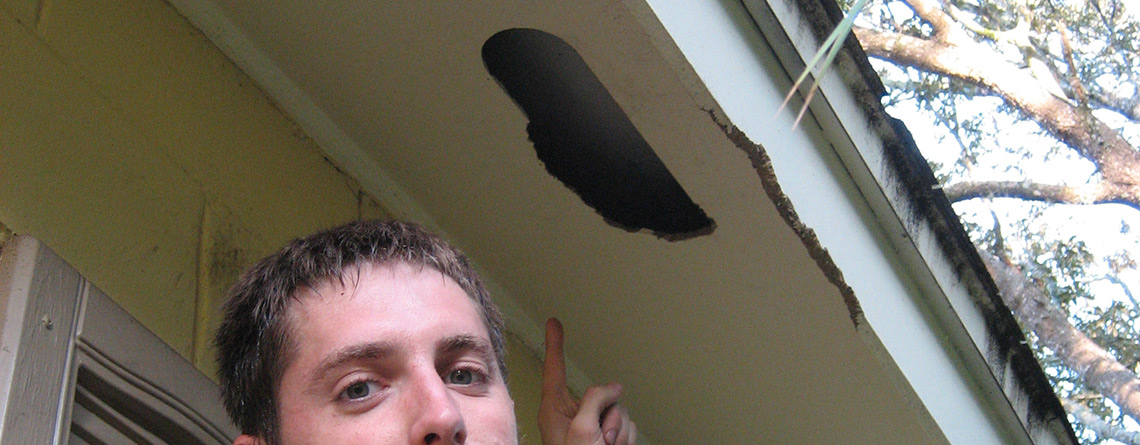Inspections For Wildlife Entry and Damage
How to Inspect a House to Find Wild Animal Entry Holes: Wildlife control cannot be achieved without proper house inspection, and that is a fact. Doing house inspection the right way means doing it from the ground up, starting from the exterior and ending with the interior. Sounds simple? It is. For a professional. Patience, thoroughness, attention to detail, and knowing what to look for are all key. And if you're willing to really commit to these home inspection basics, of course you can manage the task yourself. It's not that house inspection is some sort of rocket science, it's just that if animal control is not your actual profession, you may find the whole process pretty time-consuming and back-breaking.

If you've noticed a specific type of animal roaming around your property, or going in and out of your attic, chimney, shed, or from under your porch or deck, then you first need to do some research on how access holes used by that particular animal look like. Depending on the type of nuisance wildlife you're dealing with, you may be in for meticulous work or for a rather easy job. For example, if bats are the problem, these tiny mammals can get in and out of your home through openings as small as 3/8 of an inch, and they prefer circulating through teeny horizontal gaps. If raccoons are the problem, it's often the case that they forced their way through and you'll be able to spot missing shingles, tore open wall or tore open soffit. At the same time, there might not be any damage at all, and you will need to identify the marks left by the raccoon in order to find their point(s) of access.
However, for a general house inspection guide, this is how identification of wildlife entry holes should go:
Start on the exterior of the house at ground level
Check for any and all cracks, fissures, gaps or tiny holes. It's very important to be extra rigorous here even if the animal problem has been identified as being in the attic – tiny animals such as rats often times get in the attic through a crack found at ground level, and travel through the inside of walls to get in and out. If you have elevated structures as part of the house architecture, you need to crawl under with a flashlight and inspect the area.
After you've inspected the exterior walls, you will need to get a ladder in order to reach the roof. Make sure you're working from a big, solid, steady ladder, as if you identify entry holes while on the latter, repair work will also need to be done from there, and it will require you to stand on it just on your legs, as you will need both hands to fix the damage. Once you're up the ladder, start looking for damage where the roof meets the soffit, check the roof vents, eave vents, the wooden fascia boards, then move on to checking for holes in the actual roof (you might want to use a harness for this), and don't forget about thoroughly inspecting the chimney. Keep an eye out for chewed material. Don't only search for damage, pay attention to possible animal marks or tracks. Don't skip tight corners that are difficult to reach – chances are that this is the exact spot the animal uses to get in and out.
Next step, inspect the attic
In case you already know the attic has been invaded by a pest animals, go in protected with a full biohazard suit, gloves, and a HEPA filter mask. A headlamp will be very useful for attic inspection, so buy or borrow one if you don't have one already – it really makes the job easier. Be careful how you walk in the attic. Make it a point of only stepping on the wooden beams and trusses. Inspect all ducts and wires for possible damage, and look for animal pathways in the insulation or animal waste and nesting debris.
Make sure you also check behind household appliances such as the stove or the washer/dryer. Rats and mice may be getting in through there – seal shut the possible points of access behind these appliances with aluminum flashings.
Proper home inspection is crucial when dealing with nuisance wildlife. If a single entry hole is omitted and left unrepaired, your house remains compromised no matter how much work you've put into sealing all other animal points of entry. If you do plan on doing this yourself instead of hiring a pro, don't do a botch job of it – it's in your best interest to handle home inspection adequately.

